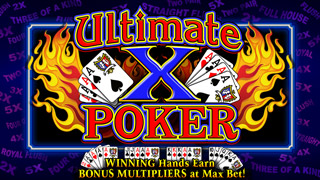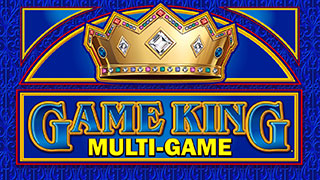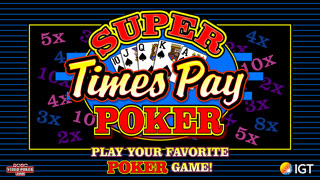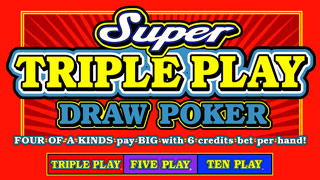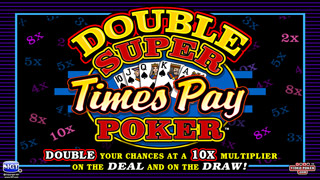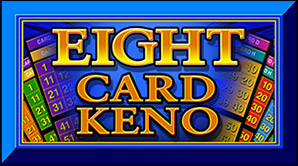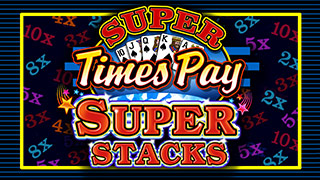When to go for quads: two math rules of thumb
-
Minn. Fatz
- VP Veteran
- Posts: 522
- Joined: Mon May 07, 2007 12:22 am
When to go for quads: two math rules of thumb
Often enough, VP players visiting new casinos may wind up playing games they are not familiar with or familiar games with unfamiliar pay tables. At least I do! Plays such as breaking a full house (FH) or two pair (2P) to try for higher-paying quads may not be obvious.
Here are some approximations, not difficult to calculate, to help decide when to make these plays for any five-card VP game with nothing wild. The mathematics behind these two “rules of thumb” follows.
Breaking FH: multiply the difference between the single-coin payoffs for a FH and three of a kind (3K) by 21 – an easy number to remember for you blackjack players! If the single-coin payoff for quads of the same rank as the three cards in your FH is greater than this, break the FH to try for the quads.
Breaking 2P: when to make this play depends on the single-coin payoffs for 3K and 2P and whether the held pair is a high pair, returning 1 coin per coin in, or will not pay off if it does not improve after the draw.
Multiply the single-coin return for a FH by 27 – 3 cubed for you math geeks – and add or subtract one of the following quantities:
payoff for 3K / 2P / held pair action
3/2/0 add 420
3/2/1 add 165
3/1/0 add 150
3/1/1 subtract 110
2/1/0 add 190
2/1/1 subtract 65
Again, if the single-coin payoff for quads of the same rank as the pair you will hold is greater than the result, break the 2P to try for the quads.
Good Mathematics!
The math: To determine the expected value of holding certain cards from a given initial hand, we multiply the number of paying combinations that can be made from the cards we hold and every possible combination of cards that remain for us to draw by the payoff for each combination; sum these products; and divide by the total number of possible combinations. The number of paying combinations possible from any given holding can be calculated by hand if you're a math masochist; otherwise, most common video poker analysis software will give you the correct numbers (I use WinPoker 6.)
For the simpler FH case, if we hold the FH we get the corresponding payoff. If we break the FH to draw two cards to trips, we get quads 46 times out of a possible combin(47,2) = 1081; we get a different FH 67 times; and we get only 3K the remaining 968 times. That is, we get quads once for every 986 / 46 = 21.04 times the 3K does not improve. Therefore, breaking the FH has a higher expected value than holding it only when the payoff for quads is 21 times more than the payoff we lose when the 3K we hold does not improve.
The 2P case is slightly more involved. When we draw one card to 2P, there are 47 possible draws. We get a FH 4 times, so the 2P does not improve on the remaining 43.
When we break 2P to draw three cards to a held pair, there are 16215 possible draws: 45 quads, 169 FH, 1852 3K, 2629 2P, and the remaining 11520 when the held pair does not improve.
To make the algebra work, we first need to multiply the numbers resulting from drawing one card to 2P by 16215 / 47 = 345. Out of 16215 trials we get a FH 4 * 345 = 1380 times and do not improve the remaining 14835.
Breaking our 2P will have a higher expected value than drawing one to the 2P only when the sum of the products of the number of paying combinations – which we'll now call “coefficients” – and the payoffs for those combinations for the first play is greater than that for the second play. Referring to the numbers above, we subtract the coefficients for the second play from those of the first and find that, for every 16215 trials, the first play gives us:
45 more quads, 1211 fewer FH, 1852 more 3K, 12206 fewer 2P and 11520 more unimproved pairs
than the second play. Algebraically, breaking the 2P is better when:
(45 * 4K) – (1211 * FH) + (1852 * 3K) – (12206 * 2P) + (11520 * 1P) > 0
To make this somewhat simpler, we sum the last three terms on the left side of the inequality into a constant we will call C and solve for 4K to obtain:
4K > (1211 / 45) * FH – (C / 45)
1211 / 45 = 26.91 or very nearly 27; the approximate values for –(C / 45) for common pay tables are given in the table above.
In Part II of this algebraic exercise we'll include payoffs for quads plus kickers; in Part III we'll show how the best draw for a penalty card situation in DB that Bob Dancer first outlined in a column several years ago changes as the flush and straight payoffs change...stay tuned...
Here are some approximations, not difficult to calculate, to help decide when to make these plays for any five-card VP game with nothing wild. The mathematics behind these two “rules of thumb” follows.
Breaking FH: multiply the difference between the single-coin payoffs for a FH and three of a kind (3K) by 21 – an easy number to remember for you blackjack players! If the single-coin payoff for quads of the same rank as the three cards in your FH is greater than this, break the FH to try for the quads.
Breaking 2P: when to make this play depends on the single-coin payoffs for 3K and 2P and whether the held pair is a high pair, returning 1 coin per coin in, or will not pay off if it does not improve after the draw.
Multiply the single-coin return for a FH by 27 – 3 cubed for you math geeks – and add or subtract one of the following quantities:
payoff for 3K / 2P / held pair action
3/2/0 add 420
3/2/1 add 165
3/1/0 add 150
3/1/1 subtract 110
2/1/0 add 190
2/1/1 subtract 65
Again, if the single-coin payoff for quads of the same rank as the pair you will hold is greater than the result, break the 2P to try for the quads.
Good Mathematics!
The math: To determine the expected value of holding certain cards from a given initial hand, we multiply the number of paying combinations that can be made from the cards we hold and every possible combination of cards that remain for us to draw by the payoff for each combination; sum these products; and divide by the total number of possible combinations. The number of paying combinations possible from any given holding can be calculated by hand if you're a math masochist; otherwise, most common video poker analysis software will give you the correct numbers (I use WinPoker 6.)
For the simpler FH case, if we hold the FH we get the corresponding payoff. If we break the FH to draw two cards to trips, we get quads 46 times out of a possible combin(47,2) = 1081; we get a different FH 67 times; and we get only 3K the remaining 968 times. That is, we get quads once for every 986 / 46 = 21.04 times the 3K does not improve. Therefore, breaking the FH has a higher expected value than holding it only when the payoff for quads is 21 times more than the payoff we lose when the 3K we hold does not improve.
The 2P case is slightly more involved. When we draw one card to 2P, there are 47 possible draws. We get a FH 4 times, so the 2P does not improve on the remaining 43.
When we break 2P to draw three cards to a held pair, there are 16215 possible draws: 45 quads, 169 FH, 1852 3K, 2629 2P, and the remaining 11520 when the held pair does not improve.
To make the algebra work, we first need to multiply the numbers resulting from drawing one card to 2P by 16215 / 47 = 345. Out of 16215 trials we get a FH 4 * 345 = 1380 times and do not improve the remaining 14835.
Breaking our 2P will have a higher expected value than drawing one to the 2P only when the sum of the products of the number of paying combinations – which we'll now call “coefficients” – and the payoffs for those combinations for the first play is greater than that for the second play. Referring to the numbers above, we subtract the coefficients for the second play from those of the first and find that, for every 16215 trials, the first play gives us:
45 more quads, 1211 fewer FH, 1852 more 3K, 12206 fewer 2P and 11520 more unimproved pairs
than the second play. Algebraically, breaking the 2P is better when:
(45 * 4K) – (1211 * FH) + (1852 * 3K) – (12206 * 2P) + (11520 * 1P) > 0
To make this somewhat simpler, we sum the last three terms on the left side of the inequality into a constant we will call C and solve for 4K to obtain:
4K > (1211 / 45) * FH – (C / 45)
1211 / 45 = 26.91 or very nearly 27; the approximate values for –(C / 45) for common pay tables are given in the table above.
In Part II of this algebraic exercise we'll include payoffs for quads plus kickers; in Part III we'll show how the best draw for a penalty card situation in DB that Bob Dancer first outlined in a column several years ago changes as the flush and straight payoffs change...stay tuned...



